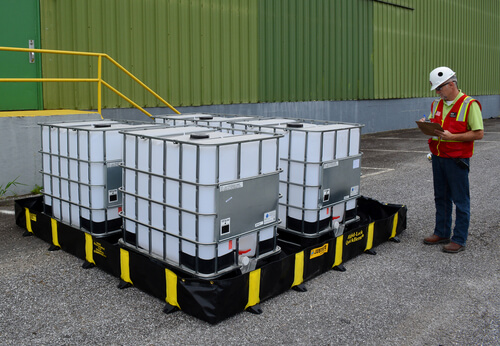Project Summary
Rinse water from fire trucks containing PFAS fire fighting foam was stored in four totes. The totes were then subjected to treatability testing and monitoring over a period of 26 weeks. ORIN used these totes to test two bioremediation strategies. Totes 1, 3, and 4 were treated with a combination of BAM and aerobic PFAS Degrading Bacteria. Tote 2 was only treated with PFAS Degrading Bacteria. All the totes were sampled for PFAS.
Project Results
The wastewaters showed sharp decreases in concentrations of larger chain per– and polyfluoroalkyl substances (PFAS) for samples taken 1 week post treatment. Shorter chain PFAS began to falloff at 15 weeks post treatment, whereupon larger chain PFAS had been reduced to non-detectable concentrations. Reductions in shorter chain PFAS are approaching non-detectable concentrations by 26 weeks. A temporary rise in total PFAS within the microbe only batch occurs at 9 weeks as a result of the microbial breakdown of larger chain to short chain PFAS. The breakdown of long chain to short chains with microbes only demonstrates their ability to degrade PFAS compounds. BAM, in combination with PFAS Degrading Bacteria, has shown to maintain successive reductions at periodic sampling times. By using BAM in combination with bacteria, the spike is reduced by absorption into the BAM until microbial degradation. BAM has shown to increase the effectiveness of the microbes by helping promote favorable growth conditions.


